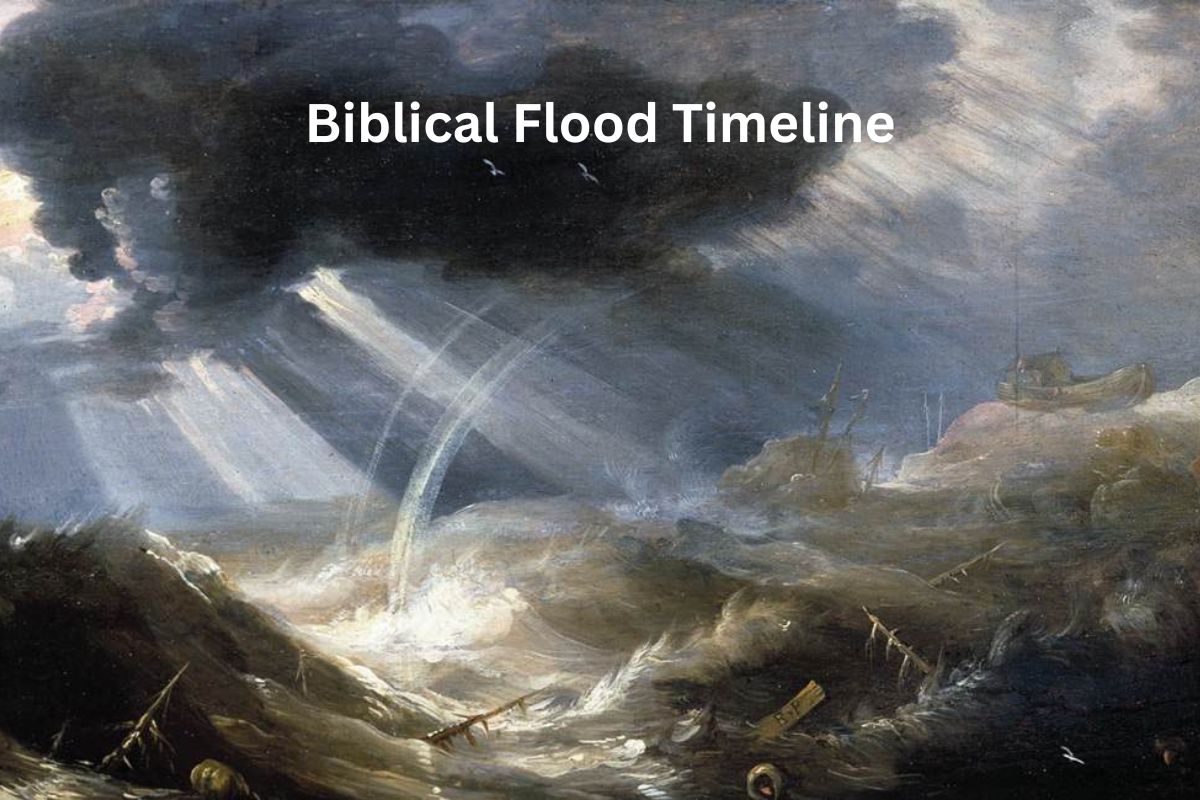The Biblical Flood, recounted in the Book of Genesis, is a renowned narrative of divine judgment, human righteousness, and renewal. Centered on Noah, a chosen righteous man, the story depicts a catastrophic flood cleansing the Earth of wickedness.
This tale, integral to Judeo-Christian tradition, has influenced global cultures. It explores themes of faith, obedience, divine mercy, and the enduring God-human covenant.
In this exploration, we’ll delve into key events, characters, and symbolism, reflecting on God’s reasons, ark construction, floodwaters, and Earth’s renewal, while considering moral and spiritual lessons.
| Event | Description |
|---|---|
| Wickedness on Earth | The world was filled with wickedness and corruption. |
| God’s Command to Noah | God chose Noah to build an ark to save his family and animals. |
| Construction of the Ark | Noah built a massive ark following God’s instructions. |
| Entry into the Ark | Noah, his family, and animals entered the ark as instructed. |
| The Flood Begins | The floodwaters began on the 17th day of the second month. |
| Forty Days and Nights | Continuous rain for 40 days and nights flooded the earth. |
| The Ark Floats | The ark floated, keeping its occupants safe. |
| The Waters Subside | After 150 days, the waters began to recede, and the ark rested on the mountains of Ararat. |
| Sending Forth the Raven and Dove | Noah sent out a raven and a dove to check for dry land. |
| Leaving the Ark | Noah, his family, and the animals left the ark when the land was dry. |
| God’s Covenant | God made a covenant with Noah, promising never to flood the earth again, symbolized by the rainbow. |
Timeline of the Biblical Flood
Wickedness on Earth:
The account of the Biblical Flood begins with the world becoming increasingly corrupt and filled with wickedness. People’s hearts were filled with evil thoughts and actions, and they turned away from God’s ways.
Also Read: Biblical Events Timeline
This moral decay led God to consider cleansing the earth of its wickedness through a great flood. The Bible describes how God saw that humanity’s continuous wickedness grieved Him.
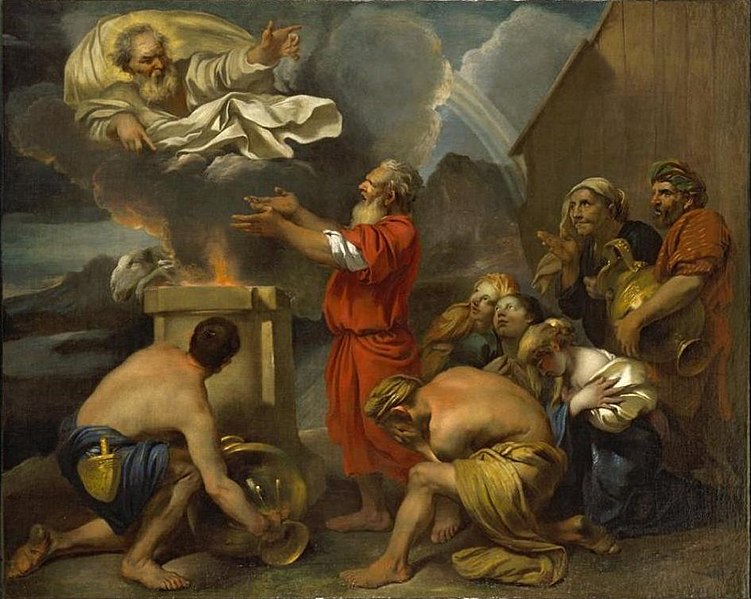
God’s Command to Noah:
In response to the wickedness on Earth, God chose Noah as the one righteous man who would carry out His plan to preserve life during the impending flood.
God personally communicated His command to Noah. He instructed Noah to build an enormous ark, a vessel capable of housing not only Noah’s family but also representatives of every kind of land animal and bird, male and female, to ensure the continuation of various species after the flood.
Also Read: Timeline of the Biblical Wars
God provided specific instructions regarding the ark’s dimensions, materials, and construction methods to ensure its seaworthiness and the safety of its occupants.
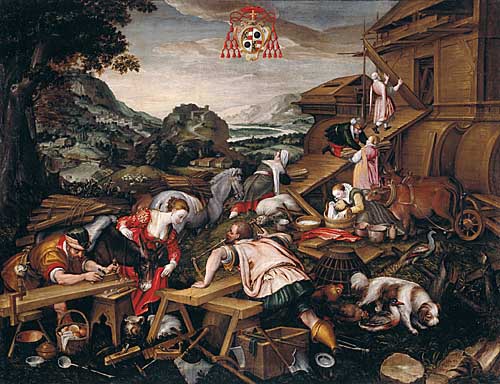
Construction of the Ark:
Upon receiving God’s command, Noah devoted himself to the monumental task of constructing the ark. The Bible does not provide a precise timeline for the construction, but it is believed to have taken many years to complete.
Also Read: Christian Denominations Timeline
The ark’s construction was a remarkable endeavor due to its massive size, designed to accommodate the animals, food, and Noah’s family for an extended period. Noah followed God’s instructions diligently, demonstrating his faith and obedience.
The construction of the ark is a testament to Noah’s unwavering faith and commitment to carrying out God’s plan despite the skepticism and ridicule he likely faced from those around him.
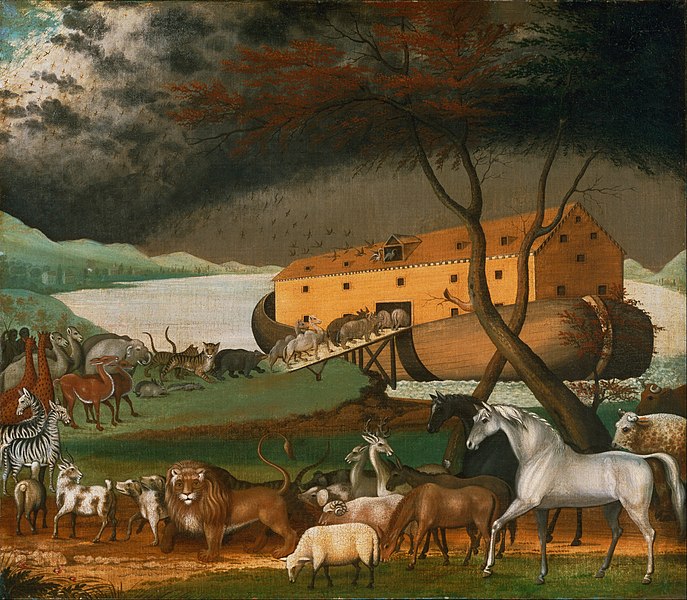
Entry into the Ark:
After the completion of the ark, as instructed by God, Noah, his family, and the selected animals entered the ark. According to the Bible, God commanded Noah to take “two of every kind of living creature, male and female,” to ensure the preservation of various species (Genesis 7:2-3).
The Bible also specifies that Noah and his family entered the ark seven days before the flood began (Genesis 7:10). This seven-day period is significant and has been interpreted in various ways, including as a time of preparation and warning.
The Flood Begins:
On the 17th day of the second month, according to the biblical account (Genesis 7:11-12), the flood began. The floodwaters came from both the skies, with heavy rain, and the depths of the earth, possibly through underground springs and geysers.
Also Read: Noah from the Bible Facts
The onset of the flood was a cataclysmic event, with torrential rain causing the waters to rise rapidly, ultimately leading to the inundation of the entire Earth. It marked the beginning of the divine judgment upon the wickedness of humanity.
Forty Days and Nights:
The rain continued relentlessly for forty days and nights, causing widespread flooding across the Earth. This forty-day period is significant and is mentioned several times in the Bible (Genesis 7:12, 7:17).
The biblical narrative emphasizes the extent of the flood and the severity of God’s judgment. The duration of the rain underscores the catastrophic nature of the event.
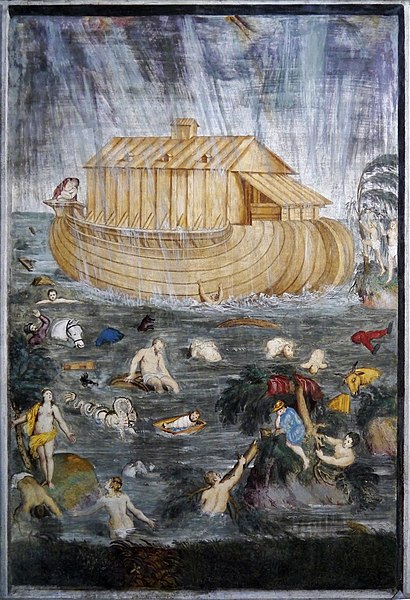
The Ark Floats:
One of the remarkable aspects of the Biblical Flood narrative is that the ark, constructed under God’s guidance, was designed to be seaworthy and capable of floating safely on the floodwaters.
Also Read: Noah’s Ark Facts
As the rain poured down and the waters rose, the ark remained afloat, ensuring the safety of Noah, his family, and the animals within. This demonstrated God’s providence and the fulfillment of His promise to preserve life through the ark.
The ark became a symbol of refuge and salvation amidst the devastation of the flood, highlighting the importance of faith and obedience to God’s commands.
The Waters Subside:
After 150 days of continuous rain and flooding, the Bible describes that the waters began to subside (Genesis 8:1). This marked a significant turning point in the narrative.
The floodwaters receding would have been a relief for Noah, his family, and the animals aboard the ark. It signified that the worst of the flood was over.
Sending Forth the Raven and Dove:
To assess the condition of the Earth and determine if it was safe to leave the ark, Noah began sending out birds. He first released a raven, which flew back and forth, indicating that the land was not yet suitable for habitation, as it still had not dried (Genesis 8:6-7).
Noah then released a dove, which returned to the ark without finding a place to rest. However, after a second release of the dove, it returned with an olive leaf in its beak, indicating that vegetation was beginning to grow again, and dry land was emerging (Genesis 8:8-11).
The use of these birds to scout for signs of life and dry land showcases Noah’s caution and his desire to follow God’s timing before leaving the ark.
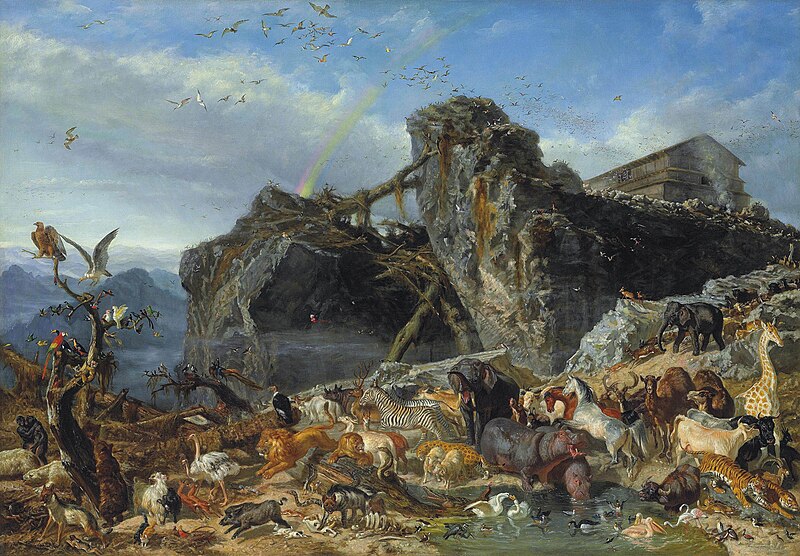
Leaving the Ark:
Based on the dove’s return with the olive leaf, Noah waited seven more days before releasing the dove once more. This time, the dove did not return, indicating that the land was now suitable for habitation (Genesis 8:12).
Following this sign from God, Noah, his family, and the animals disembarked from the ark. They had spent over a year inside the ark, and now they could begin anew on the restored Earth.
Leaving the ark symbolized a fresh start for humanity and all living creatures, a chance to rebuild and repopulate the Earth according to God’s plan.
God’s Covenant:
After Noah and his family left the ark, they offered sacrifices to God as an expression of gratitude and devotion (Genesis 8:20-21). God, pleased with their offerings and recognizing their righteousness, made a covenant with Noah.
In this covenant, God promised never to flood the entire Earth again to destroy all life. To seal this promise, God provided a sign—the rainbow—as a reminder of His covenant (Genesis 9:11-17).
The rainbow’s appearance after rainstorms serves as a reminder of God’s mercy, grace, and commitment to humanity. It signifies that while God judges sin, He also offers the promise of forgiveness and a fresh start.
